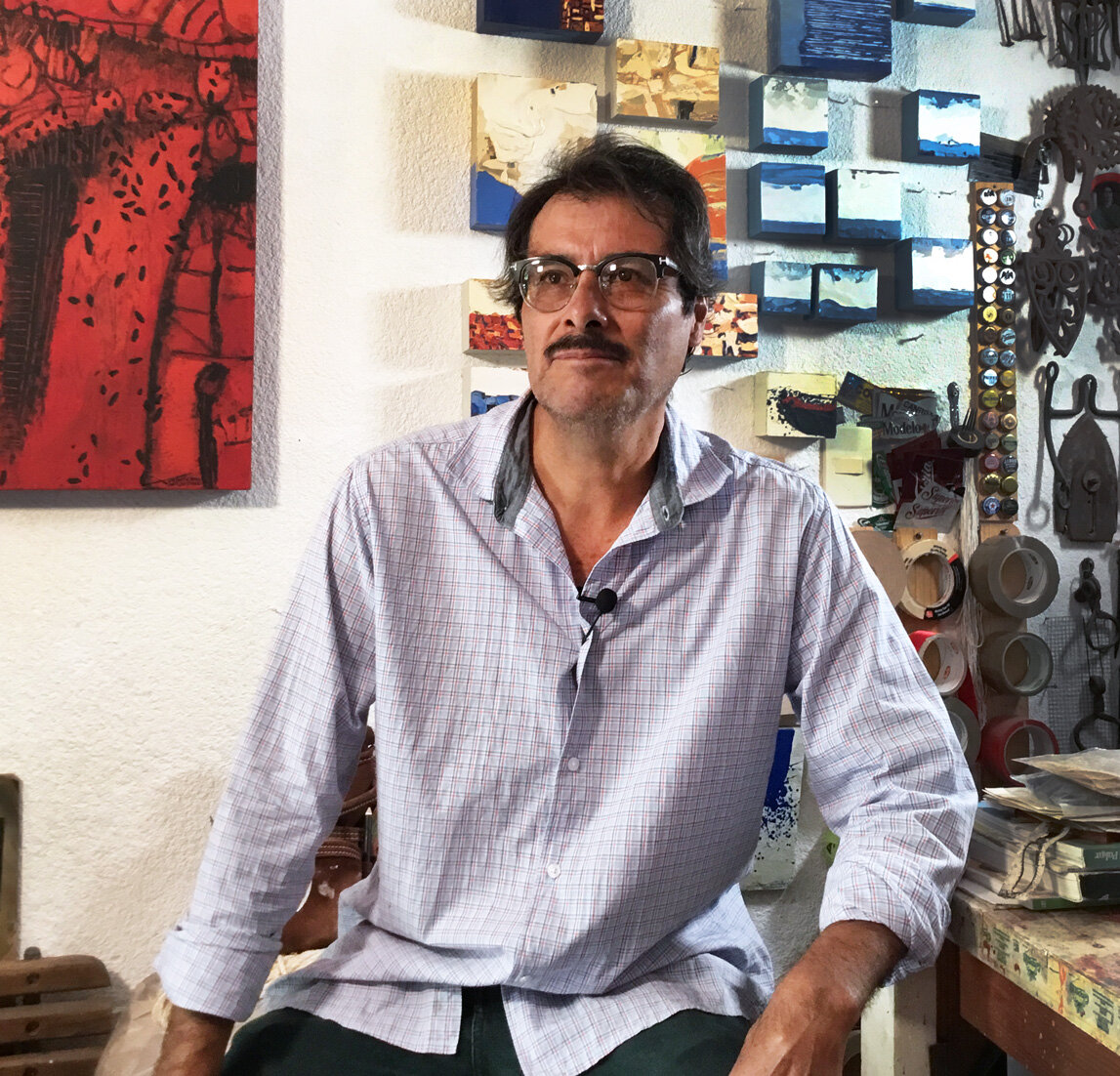Virgilio Santaella
Born on May 17, 1964 in San Pablo Huitzo, Etla, Oaxaca, Mexico.
Outside the machine of the mind is the work of Virgilio Santaella cultivating our subconscious. Without trying to decipher it, you should observe it without prejudice, bias, or guidance. You must put everything else aside, observe, and abandon time.
Maestro Santaella grows up and develops his insightful observation of the landscape in the rural township of San Pablo Huitzo, a town with an interesting history on the “outskirts” of Oaxaca de Juárez in the Etla district. Huitzo, established in 1200 BC, stems from the influences of its background. Named Huijazoo, the tower of the warrior fort by the Zapotecs, it was popularized in Nahuatl as Gueixolotitlan, whose meaning in Spanish is "spine." It is later colonized under Hernán Cortes’ rule in the 16th century. The evangelizing friars baptize Huitzo as “Saint Paul the Apostle of Huexolotitlan,” the place of the turkeys, whose pronunciation was equivocally established.
The ancient Atoyac River and all its implications runs through the population. Santaella as a child enjoys the explorative freedom of the site and traditions, especially the now near-extinct fresh water of the river and the Matias Romero dam, a botanical and fauna oasis for the population. His childhood friends and Santaella are impacted by the immensity of the dam's barrage wall and the nature and landscapes that surround it — arid landscapes in the summer, it seems, that turn into colossal green horticulture fields in the rainy season. They fished, swam and threw stones in "the great sea." Santaella learns to observe the indecipherable intersections of meanings of this vastness, of its delicacy and meandering, to express them many years later in his abstract pictographic works.
Santaella studies art at the Rufino Tamayo Plastic Arts Workshop in the Center of Oaxaca twenty years later, presenting his first works of abstraction in 1985 at the Rufino Tamayo Gallery. This takes him to exhibition opportunities in the great City of Mexico, and the rest of North America and Europe. His recent trajectory includes belonging to collections in large institutions; most recent collections include the Benjamin Franklin Library at the USA Embassy in Mexico and the Workers of Pascual and the Arts Cultural Foundation.
Virgilio Santaella in his studio, Villas de Etla, Oaxaca

